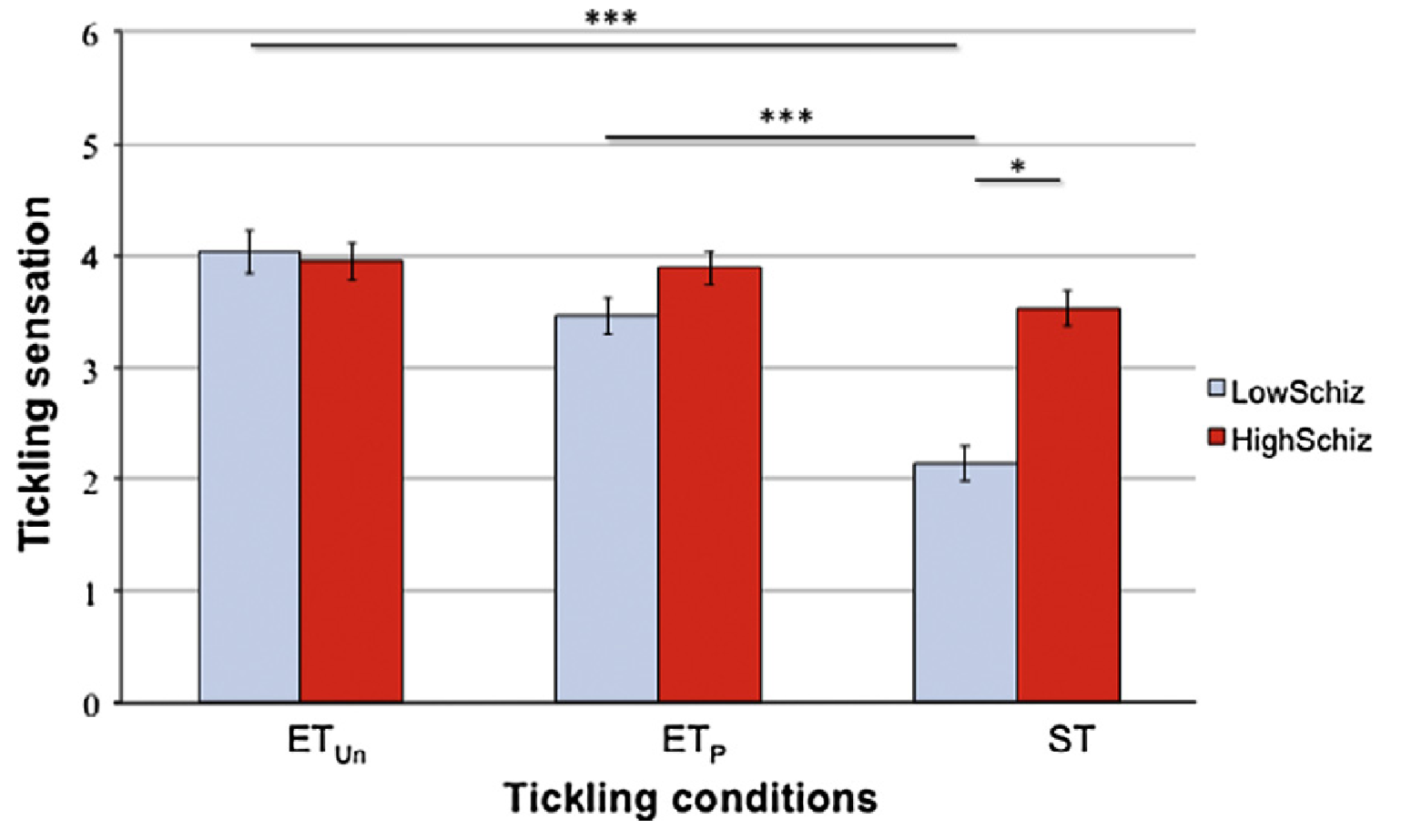Devoirs
Extraire les variables et savoir expliquer l’analyse
⇒ Seul les personnes parmi celles ayant des scores très haut/bas au SPQ étaient retenu pour passer le test. VI1 : Niveau de Schizotypie {Haut, Bas} (“HighSchiz and LowSchiz groups”p.3, (SPQ)) VI2 : Condition sur la machine {SelfTickling, PredictableExternalTickling, UnpredictableExternalTickling} ((((VI?: Score d’experience de passivité (SAPE-GP))))
VD1 : Sensation de chatouillement perçue [0-10], VD2 : Taux/Rythle de chatouillement
VC : Age, “None of the participants showed motor or sensory impairments or reported a history of neurological or psychiatric disorders. “p.3
Résultats :
“Our key finding was a significant interaction between schizotypal traits and the tickling condition (Fig. 2): p.4”
→ Post-hoc : “tickling sensation was significantly more intense in the ET UN condition (3.99) than in the ST condition (2.83) (p < .0001)“p.4

Discussion: “As expected (on the basis of the literature data), we observed that subjects low in schizotypal traits (the LowSchiz group) felt a self-applied tactile stimulation to be less ticklish than the same stimulation applied by someone else “p.5 “Subjects high in schizotypal traits (the High Schiz group) rated a self-applied tactile stimuli to be more tickly than the low schizotypal subjects did”p.5
“Our findings suggest that the HighSchiz participants were less able to generate neural predictions that match the sensory consequences of their voluntary acts “p.5